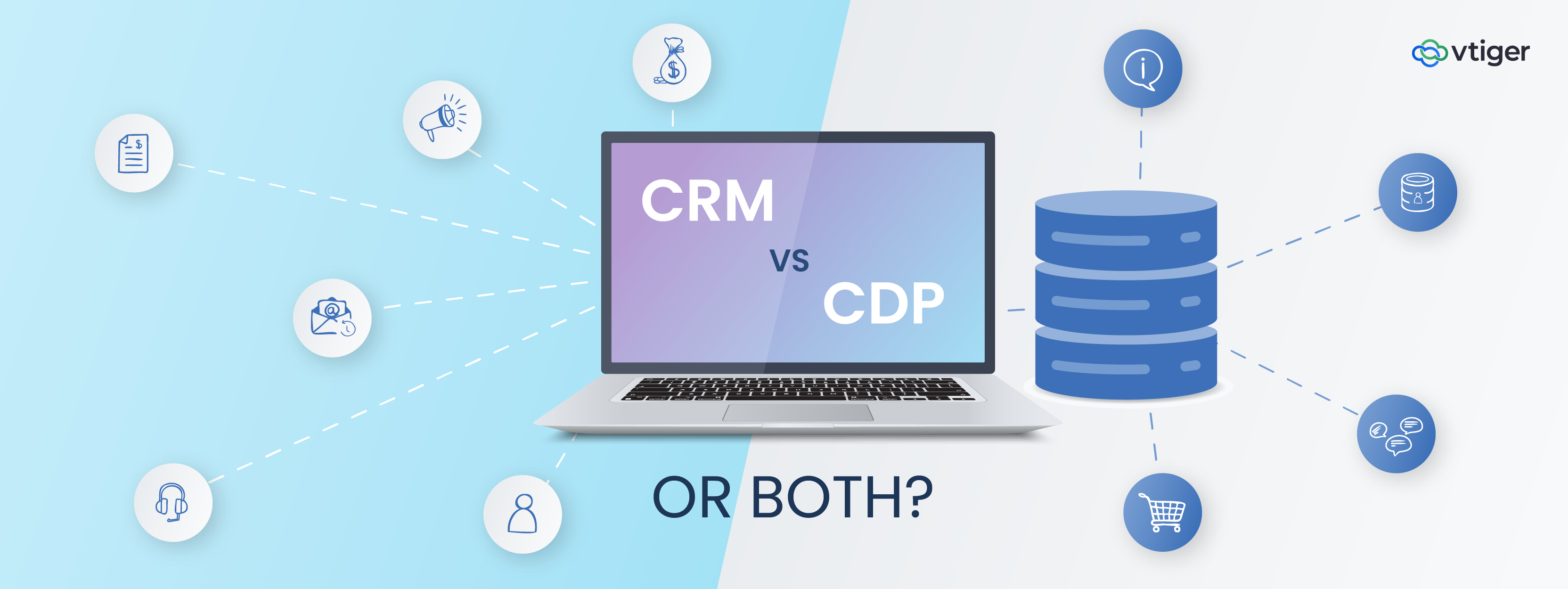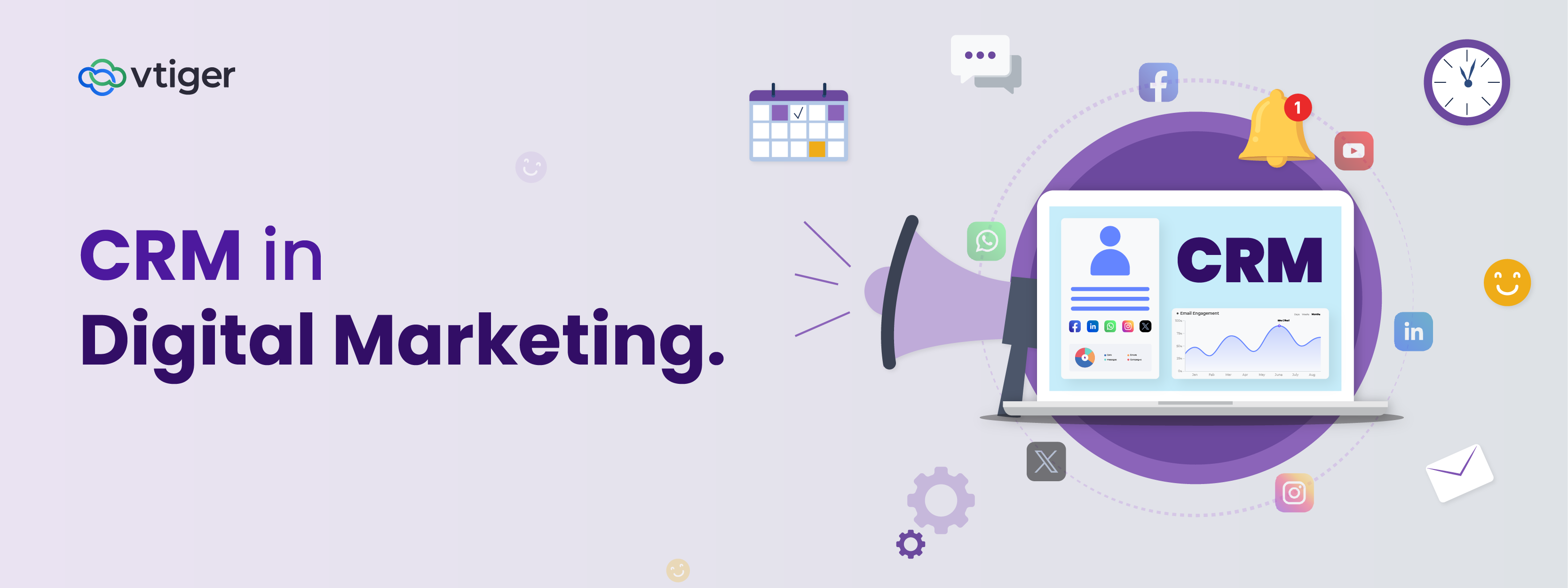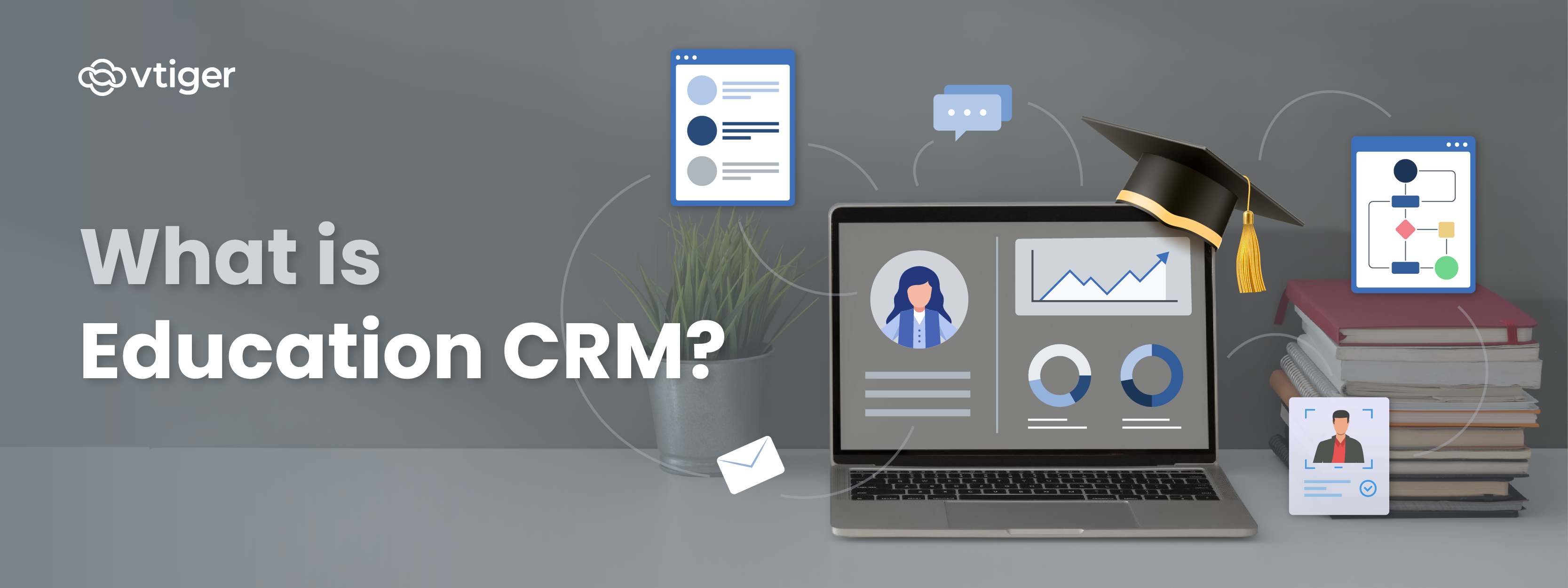TL;DR:
In the realm of customer data management, the lines between Customer Data Platforms (CDPs) and Customer Relationship Management (CRM) tools have become increasingly blurred. Historically distinct, these two solutions were traditionally employed to serve distinct purposes, with businesses often utilizing both to craft a comprehensive customer-centric strategy.
However, as technology has advanced, CRMs have evolved to bridge the gap and, in some cases, outshine CDPs in becoming the definitive single source of truth for organizations across the board.
In this blog post, we dive into the shifting landscape of CDPs and CRMs, exploring how these changes are reshaping customer data management and empowering businesses to forge stronger, more data-driven relationships with their customers.
What is the CRM vs CDP debate all about?
In the competitive landscape of modern business, companies equipped with the ability to efficiently gather, utilize, and capitalize on customer data gain a significant edge over their counterparts lacking data-driven insights. Over the years, sophisticated tools have emerged, aiding businesses in this crucial endeavor.
Within this dynamic, the discourse between CRM (Customer Relationship Management) and CDP (Customer Data Platform) takes center stage, delving into the strategic nuances of how enterprises navigate and harness customer data to enhance their marketing, sales, and overall customer interactions.
The pivotal challenge lies in crafting an optimal customer data stack—one that seamlessly integrates leading-edge data solutions, advanced analytics, and powerful activation tools. Simultaneously, it necessitates dismantling silos within organizations, ensuring unfettered access to precise, comprehensive, and privacy-compliant data for every team member. This pursuit of a harmonized and informed approach forms the crux of our exploration of the CRM v/s CDP debate.
Data everywhere except where you need it
The modern B2B landscape is teeming with an abundance of data, yet it often seems that data is everywhere except where you need it most – within the grasp of those who seek to harness its power for informed decision-making and customer-centric strategies. This predicament highlights the paradox of plenty; organizations are inundated with a profusion of customer data, but its dispersed, siloed, and fragmented nature can render it virtually inaccessible when it matters most.
One of the chief culprits of this “data everywhere except where you need it” phenomenon is the proliferation of disparate systems within businesses. Customer data is scattered across various departments, tools, and platforms, making it challenging to create a cohesive and holistic view of each customer. Sales teams have their CRM systems, marketing teams rely on automation tools, customer support has its databases, and the list goes on. These isolated data sources hinder the ability to develop a unified customer profile, leaving gaps in understanding and impeding personalized engagement.
To overcome this conundrum, businesses must recognize the imperative of breaking down data silos and implementing integrated solutions. Customer Data Platforms (CDPs) and robust CRM systems can play a pivotal role in centralizing and harmonizing data. By doing so, organizations can bridge the gap between “data everywhere” and “data where you need it,” enabling them to derive valuable insights, optimize customer experiences, and ultimately gain a competitive edge in the B2B landscape.
What is a CRM?
A Customer Relationship Management (CRM) system is a powerful tool that businesses employ to manage and nurture their interactions with customers and potential leads. At its core, a CRM serves as a centralized repository for storing and organizing customer data, ranging from contact information and communication history to purchase records and preferences. By providing a comprehensive view of each customer, a CRM equips businesses with the insights needed to tailor their interactions, deliver exceptional customer experiences, and drive growth.
One of the fundamental functions of a CRM is to streamline sales processes. Sales teams rely on CRM software to track leads, manage opportunities, and monitor the progress of deals. This functionality not only enhances efficiency but also ensures that sales efforts are targeted and well-informed, ultimately increasing the likelihood of converting leads into loyal customers. Additionally, CRMs facilitate improved communication within organizations by allowing teams to share customer data and collaborate on customer-centric strategies.
Beyond sales, CRMs also play a crucial role in marketing and customer support. Marketers utilize CRM data to segment customers, personalize campaigns, and measure the effectiveness of their initiatives. On the customer support front, CRMs enable better issue tracking and resolution by providing agents with a holistic view of a customer’s history, thereby enhancing the quality of service provided. In essence, a CRM is a multifaceted tool that empowers businesses to build and maintain strong, lasting relationships with their customers while driving operational efficiency and revenue growth.
What is a CDP?
A Customer Data Platform (CDP) is a sophisticated technology solution designed to centralize and unify customer data from various sources across an organization. Unlike traditional databases or Customer Relationship Management (CRM) systems, CDPs excel in handling vast and diverse datasets, including structured and unstructured data, online and offline interactions, and first-party as well as third-party information. The primary objective of a CDP is to create a comprehensive, 360-degree view of each customer by connecting and consolidating data points, resulting in a single, accurate, and holistic customer profile.
One of the key distinctions of a CDP is its ability to collect and process data in real-time, ensuring that the customer profile remains up-to-date and reflective of the latest interactions. This real-time data integration enables organizations to deliver highly personalized customer experiences, as marketing teams can leverage the most current insights for targeted campaigns and product recommendations. Furthermore, CDPs often incorporate advanced analytics and machine learning capabilities, enabling businesses to extract actionable insights, predict customer behavior, and optimize marketing strategies.
CDPs are increasingly vital in today’s data-driven business landscape, where customer expectations for personalized experiences are continually rising. These platforms empower organizations to break down data silos, improve cross-channel consistency, and provide a more cohesive and relevant engagement with customers. By doing so, CDPs empower businesses to turn customer data into a strategic asset, fueling growth, customer loyalty, and competitive advantage in an increasingly competitive marketplace.
What have been the differences traditionally?
While both CRM and CDP play essential roles in managing customer data, traditionally they have had distinct purposes, features, and capabilities. Here’s an overview of the key differences and similarities between most CRMs and CDP platforms:
Purpose
- CRM: Most CRM systems are primarily designed for managing customer relationships, interactions, and sales processes. It focuses on capturing and organizing customer data related to sales, customer support, and marketing efforts. CRMs help sales teams track leads, manage opportunities, and nurture customer relationships.
- CDP: A CDP, on the other hand, is specifically designed to collect, unify, and centralize customer data from various sources. It is intended to create a comprehensive and unified customer profile that includes data from online and offline channels. CDPs are often used for marketing and customer analytics.
Data Scope
- CRM: CRM systems typically contain structured data related to customer transactions, contact details, sales history, and customer service interactions. They are more focused on first-party data.
- CDP: CDPs are built to handle a wider range of data, including both structured and unstructured data from various sources such as websites, mobile apps, email marketing, social media, and more. They can also incorporate third-party data to enrich customer profiles.
Data Unification
- CRM: Most CRMs may not provide extensive data unification capabilities. They often rely on manually inputting and updating data.
- CDP: CDPs excel at data unification, using advanced algorithms and machine learning techniques to create a single, holistic customer profile. They can automatically match and merge data from different sources to provide a 360-degree view of the customer.
Use Cases
- CRM: A vast majority of CRMs are designed for sales and customer service teams, helping them manage leads, close deals, and provide better customer support.
- CDP: CDPs are primarily used by marketing teams for customer segmentation, personalization, targeted marketing campaigns, and customer journey analysis.
Integration
- CRM: CRMs often integrate with various sales and marketing tools, but their data may not be as easily accessible to other systems.
- CDP: CDPs are designed to integrate with a wide range of marketing, analytics, and customer engagement tools, enabling data to flow seamlessly across the organization.
Blurring boundaries between CRM and CDP platforms
The lines between CRM systems and CDP have gradually blurred in response to the evolving needs of businesses in the digital age. Traditionally, CRMs were primarily focused on managing existing customer relationships, providing tools for sales, marketing, and customer service teams to streamline their processes. On the other hand, CDPs emerged as a response to the challenge of aggregating data from numerous online and offline sources, aiming to create a unified customer profile for marketing purposes. However, as businesses recognize the value of comprehensive customer insights throughout the entire customer lifecycle, the boundaries between CRM and CDP have become increasingly porous.
In this blurred landscape, modern CRMs are adopting CDP-like features, allowing businesses to gather and analyze vast amounts of customer data beyond transactional information. Advanced CRMs like Vtiger One now offer capabilities for real-time data integration, enabling businesses to create a more detailed and current view of their customers. Conversely, CDPs are starting to incorporate functionalities akin to traditional CRMs, allowing for improved customer engagement and relationship management. This convergence is driven by the understanding that a seamless customer experience requires a holistic approach, where marketing, sales, and customer service efforts are deeply interconnected and informed by a unified understanding of the customer journey.
This blurring of boundaries signifies a shift towards a more integrated and customer-centric approach in the business landscape. It enables businesses to leverage the strengths of both CRM and CDP, ensuring a unified, real-time, and personalized customer experience. By combining these tools effectively, organizations can bridge the gap between customer data management and customer relationship building, creating a symbiotic relationship that fosters meaningful customer connections, drives loyalty, and fuels business growth.
Not all CRMs are designed to make the leap
CRMs have been around for a few decades now and a lot of the large systems carry the weight of their legacy architecture. Many of the systems were built as discrete systems, especially in the early years of the cloud, each of which solved a specific problem. When customer centricity became critical for success, these providers had to unify data by ‘stitching’ together data points from multiple applications. This approach has a multitude of challenges and is often error prone and ineffective.
Systems like Vtiger, which were designed from day one to be a single source of truth are able to bridge the gap and evolve faster and better. The monolithic architecture, which offers a single source of truth, presents several advantages over the practice of stitching data from various sources. A central and unified repository for data simplifies data management and ensures data integrity, reducing the complexities and challenges associated with data silos. With a single source of truth, organizations can trust that their data is accurate, consistent, and up-to-date, which is crucial for informed decision-making and ensuring data-driven strategies are built on a solid foundation.
Moreover, a monolithic architecture streamlines data access and retrieval. Teams across different departments can easily access the same source of data without having to navigate through multiple systems or perform elaborate data stitching processes. This accessibility not only enhances efficiency but also promotes collaboration, as teams can work with a shared understanding of the data. This can be especially valuable in scenarios where cross-functional teams need to collaborate on projects that rely on consistent and reliable data, such as marketing campaigns, product development, or customer service initiatives.
Additionally, a single source of truth can enhance data security and compliance. By consolidating data into a centralized system, organizations can implement robust security measures and access controls to safeguard sensitive information. This is particularly important in industries with stringent data privacy and regulatory requirements, as it helps organizations maintain compliance while minimizing the risk of data breaches. In contrast, stitching data from various sources can introduce security vulnerabilities and compliance challenges when trying to ensure data protection and adherence to regulatory standards across disparate systems.
Summary
In the ongoing debate between CRM and CDP, it’s clear that both systems have distinct roles to play in the evolving landscape of customer data management. Technological evolution is blurring the boundaries between these applications with CRMs catching up fast. Some CRMs function very well as a CDP as well albeit with some limitations.
While CRMs traditionally excel in relationship-focused functions like sales and customer service, CDPs shine in consolidating and unifying data from multiple sources for targeted marketing campaigns – especially for large B2C focused enterprises where consuming unstructured data from a large number of real time data streams is critical.
The key takeaway is that businesses should embrace the convergence of these technologies, recognizing that the blurring boundaries offer an opportunity for a more comprehensive approach to customer data. By strategically integrating CRM and CDP capabilities by integrating these tools or investing in technology that bridge the gap natively, organizations can create a powerful synergy, fostering deeper customer relationships and gaining a competitive edge in today’s data-driven world. Ultimately, the debate shouldn’t center on CRM vs. CDP but on how tools they use can unlock the full potential of customer data.



